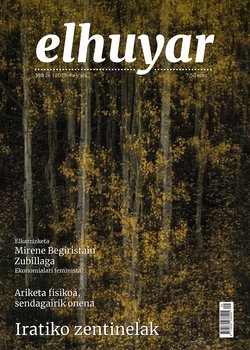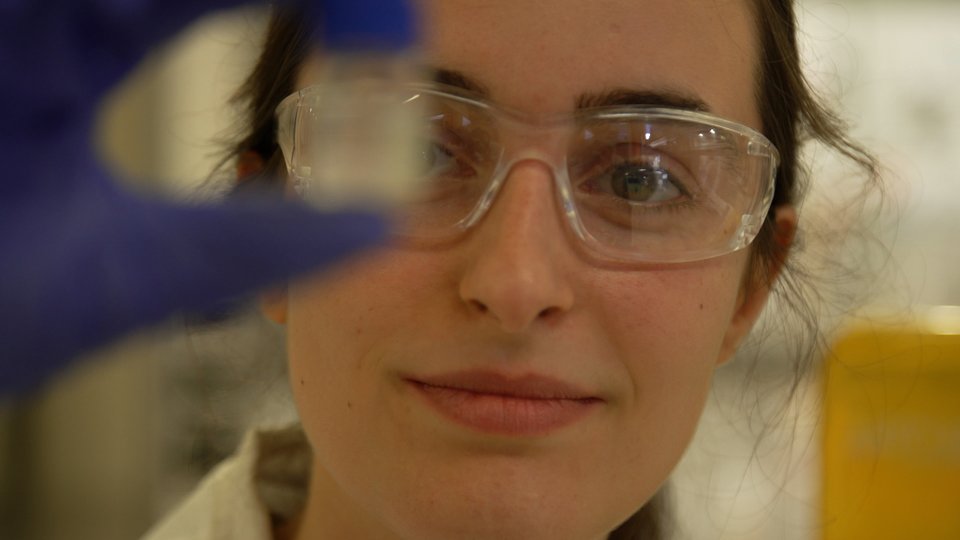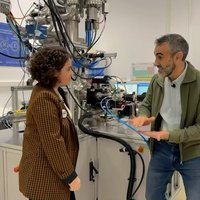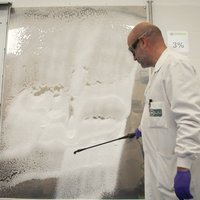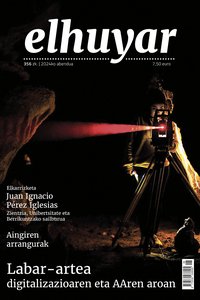María José Iriarte: "A good interpretation of pollen fossil data results in surprising results"

Yes, but pollen research is only a part. It is a field of paleobotany, study of ancient vegetation. It is interesting because it provides a lot of information. On the one hand, it shows the evolution of the plant landscape and, therefore, of the climate; in addition, it reveals the plant environment that human beings have found throughout history; it tells us how human beings have used plants as food, fuels, raw materials of clothing, medicines, building materials, etc. ; and finally, the impact of human beings is reflected in the research of ancient vegetation.
Sometimes we find burnt wood in the field, the part that studies that wood is called anthracology. In addition, we find fruits or seeds that are the object of study of carpology. If it has remained in time you can study any vegetable imprint. Pollen, for example, can last many years, hundreds of thousands sometimes.
To understand it you have to know how pollen is. Inside is the sexual cell itself and outside a hard surface called exine. The interior does not last long, it degrades. But exin sporopolenin is a substance that protects and lasts a lot. Among other things, it suffers chemical reactions; we treat pollen with acids and strong bases to separate it from the sediment and does not spoil. Finally, palenologists studied the pollen surface of the old deposits.
There is a wide variety of specimens, each plant species has its own grain. By size, they are all microns, but they vary a lot, the smallest has about 2.5 microns and the largest 250. (Those I research are 15-50 microns in size.) However, there is no relationship between plant sizes and pollen grain. For example, trees do not necessarily have more pollen than crops. In fact, crop pollen grains are large by human selection.
It seems that pollen varies greatly from species to species. Not all are spherical, as chestnut pollen is oval. In addition, they do not usually have a uniform surface, some have pores and others have openings. The species differ by their characteristics. Grain size and shape are good indicators to know which species pollen is, but that's not enough. They help a lot to study the current pollen, but in the case of fossil pollen it is more difficult. They have usually remained within the sediment for many years, so care must be taken to interpret the size and shape of the fossil pollen grain.
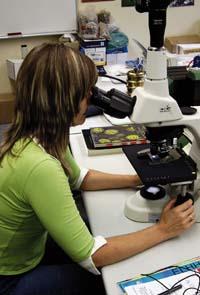
The identification of the fossil of pollen is always done by an optical microscope. We cannot use the electron microscope because there are very few specimens. It could be used to analyze the current pollen, with as many specimens as desired, but the old one is mandatory to analyze it with the optical microscope.
And many more things. For example, we cannot have plants in the laboratory to avoid contaminating the samples. And we have to have the windows closed, because while we work you can put the pollen of the street. That was what happened to us at a university where I worked. A worker left the window open and we discovered the strange pollen. Then we realized that from the garden next to the building came the pollen of a floor.
On the one hand, the old pollen rain reflects the plant environment of the time. On the other hand, the relationship between tree pollen, non-tree pollen and spores reflects the climate curve. Therefore, all three are important. Spores are remnants of the brain that indicate the humidity at the time of its formation.
Be careful. Pollen percentages must be taken into account, among others. It is not the same as 20% of the sample is pine than 10% wicker, since wicker produces much less pollen than pine. In the first case we cannot say that there was a large pine forest, but in the second case it is the footprint of a large meadow.
A good interpretation of the data allows for surprising results. Palinological research has not been carried out in many areas.
Beech fossil. In the entire Atlantic slope of the Basque Country the beech appears below 400 meters. I have studies from the beginning of the Holocene until today, that is, data of the beeches of 10,000 years ago, such as the pollen collected in Sollube and the collection in Urdaibai.
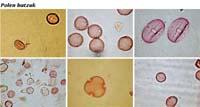
The question is how they appear in such small heights. And the answer is that they were orographic characteristics appropriate for beech. People believe that the beech always appears above 700 meters, but at 200-300 meters high there are beech trees today, such as the Añarbe reservoir or the Urola river basin.
The key is not height, but the environment. And it changes from one plant to another; the oak prefers a soil rich in fertilizers with high humidity, while the beech prefers a cloudy environment and an atmosphere with high humidity. Of course, mists get caught in the mountains. But beech also appears in places that get stuck below.
This belief is totally wrong. In Arrasate we found pollen from 34,000 years ago. It also appears in the Holocene.
Pollen analysis has not been performed. Much remains to be investigated. Agriculture itself, for example. It is believed that in the Basque Country it comes from the Mediterranean side, where the Neolithic expanded faster than in the Atlantic. Moreover, it is believed that the Atlantic learned little by little and that Roman influence was necessary to strengthen agriculture. The idea is totally false. It is a very old pollen that shows that agriculture is very old on the Atlantic side; that of the Mediterranean is 6,200 years ago and that of the Atlantic about 6,000 years ago. There are crop residues. And human influence is also reflected in the landscape.
We greeted but did not want to go without asking another question. "I haven't asked you… do you like your profession, right?" María José Iriarte laughs. "If I hadn't really liked it, I wouldn't have entered such a job," he said.
Buletina
Bidali zure helbide elektronikoa eta jaso asteroko buletina zure sarrera-ontzian


